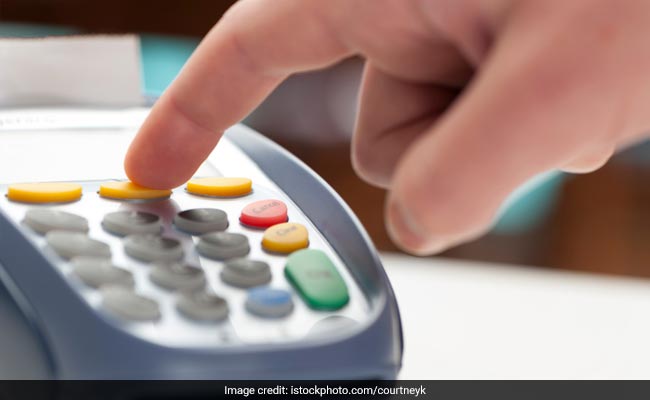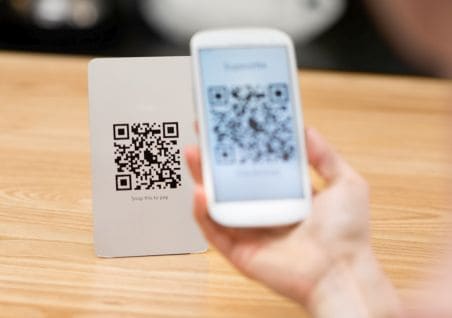- Cashless Bano India/
- Features/
- In Digital India, Common Man Still Prefers Cash Transactions
In Digital India, Common Man Still Prefers Cash Transactions
Written by Rachna Nath | Updated: July 31, 2017 10:30 IST

New Delhi: For the first time in the history of India, the government decided to fix a target for Digital Payments, when in the 2017 Union Budget, they announced a target of reaching 25 billion digital payments in FY 2017-18. While it was a big jump from 9.1 billion digital payments in FY 2017, considering the population, increasing use of cards, digital wallets, smart phones, and the government's own push with BHIM, AEPS, UPI, IMPS, USSD (*99# services) etc., the target does not seem unachievable. Having said that let's now look at a few statistics.
According to National Payments Corporation of India (NPCI), December 2016 saw the largest number of digital transactions (41 million) during the period of demonetisation (November 16 to January 17). Post demonetisation, March (44 million) and April (42 million) saw digital transactions at their peak. However in May and June this year, we saw the number of transactions decline to 37 million. The digital mechanisms, which appeared after demonitisation, disappeared at the same pace from a number of merchant sites or relegated to the darker corners only to be presented when asked for. The situation changed because 'cash was back'. The good news, however, is, that no one is losing heart.
An economy that is accustomed to using cash, recognises the fact that to be a truly digital economy, one needs to look at this as a journey that will require perseverance in resolving complex issues, and will need a focused management to achieve the outcome. The latter is being managed ably by government bodies like the NITI Aayog and NPCI.
So, why cash is still the king?
Demonetisation proved beyond a doubt that Indians not only like to buy in cash but save in cash as well. Other than this, the cost of infrastructure at the retail end, like investment in Point of Sale (PoS) machines or the cost of a digital transaction tend to be high; so the retailer prefers cash. Financial literacy tends to be low in India, and women who when included, helped drive literacy and micro-finance revolution, largely are still not part of the change. Added to all this is the fact that the parallel economy forms a big part of the overall economy.
While GST will do its bit to get more transparency into the system, if we are to grow the digital economy, we will need to take both government initiated top-down and grassroot bottom-up approach. Other than the conventional methods lie through the bank mitra etc, for this, collaboration would be key. With the government and the private sector doing more and enough to create payment solutions and infrastructure, the focus now needs to be given to resolving the 'last mile issues' for which we need to look at less conventional methods.
The first need would be to see how we can educate a large number of our women and farmers, and get them into the system. This will require us to also leverage non-conventional ecosystems that include agri-based companies (including food, food-based retail, pesticides, fertilisers and new-age 'farm as a service' companies), India Post, self-help groups (SHGs), non-government organisations (NGOs) and micro-finance companies who reach out to this part of the population directly. These players will need to be incentivised to propagate financial literacy.
Other than this, the initiative to resolve the cost of transaction for the micro and small businesses, specifically the retail players, will need to be accelerated. Is there a way that the government can subsidise the financial institution and make the transaction at the retailer's end free of charge for the next few years? In India the cost of cash tends to be as high as 1.7 per cent of the GDP, and moving to digital payments will help the government cross-subsidise these expenses.
It's important for us to understand that while connectivity and security will require due focus, the transition to a digital economy will only happen when India moves from cash to a digital mindset, which in itself is not an infrastructural but a deep-rooted cultural issue. If we can't manage this transition, it will be like having the ghost towns in China in the 2000s, which had the smart city infrastructure but no one to live in.
Disclaimer: The opinions expressed within this article are the personal opinions of the author and do not necessarily represent the views and opinions of KPMG in India. The facts and opinions appearing in the article also do not reflect the views of NDTV and NDTV does not assume any responsibility or liability for the same.
According to National Payments Corporation of India (NPCI), December 2016 saw the largest number of digital transactions (41 million) during the period of demonetisation (November 16 to January 17). Post demonetisation, March (44 million) and April (42 million) saw digital transactions at their peak. However in May and June this year, we saw the number of transactions decline to 37 million. The digital mechanisms, which appeared after demonitisation, disappeared at the same pace from a number of merchant sites or relegated to the darker corners only to be presented when asked for. The situation changed because 'cash was back'. The good news, however, is, that no one is losing heart.
An economy that is accustomed to using cash, recognises the fact that to be a truly digital economy, one needs to look at this as a journey that will require perseverance in resolving complex issues, and will need a focused management to achieve the outcome. The latter is being managed ably by government bodies like the NITI Aayog and NPCI.
So, why cash is still the king?
Demonetisation proved beyond a doubt that Indians not only like to buy in cash but save in cash as well. Other than this, the cost of infrastructure at the retail end, like investment in Point of Sale (PoS) machines or the cost of a digital transaction tend to be high; so the retailer prefers cash. Financial literacy tends to be low in India, and women who when included, helped drive literacy and micro-finance revolution, largely are still not part of the change. Added to all this is the fact that the parallel economy forms a big part of the overall economy.
While GST will do its bit to get more transparency into the system, if we are to grow the digital economy, we will need to take both government initiated top-down and grassroot bottom-up approach. Other than the conventional methods lie through the bank mitra etc, for this, collaboration would be key. With the government and the private sector doing more and enough to create payment solutions and infrastructure, the focus now needs to be given to resolving the 'last mile issues' for which we need to look at less conventional methods.
The first need would be to see how we can educate a large number of our women and farmers, and get them into the system. This will require us to also leverage non-conventional ecosystems that include agri-based companies (including food, food-based retail, pesticides, fertilisers and new-age 'farm as a service' companies), India Post, self-help groups (SHGs), non-government organisations (NGOs) and micro-finance companies who reach out to this part of the population directly. These players will need to be incentivised to propagate financial literacy.
Other than this, the initiative to resolve the cost of transaction for the micro and small businesses, specifically the retail players, will need to be accelerated. Is there a way that the government can subsidise the financial institution and make the transaction at the retailer's end free of charge for the next few years? In India the cost of cash tends to be as high as 1.7 per cent of the GDP, and moving to digital payments will help the government cross-subsidise these expenses.
It's important for us to understand that while connectivity and security will require due focus, the transition to a digital economy will only happen when India moves from cash to a digital mindset, which in itself is not an infrastructural but a deep-rooted cultural issue. If we can't manage this transition, it will be like having the ghost towns in China in the 2000s, which had the smart city infrastructure but no one to live in.
Disclaimer: The opinions expressed within this article are the personal opinions of the author and do not necessarily represent the views and opinions of KPMG in India. The facts and opinions appearing in the article also do not reflect the views of NDTV and NDTV does not assume any responsibility or liability for the same.
Published: July 26, 2017 21:58 IST
About The Campaign

NDTV along with MasterCard is launching a multi-platform campaign “Cashless Bano India”, to create digital awareness and educate the masses about digital payment solutions for day to day transactions.
The campaign aims to take the message of a cash free India to the country, all while educating them on the ways and means to do it.
We aim to reach out to people and educate them on:
1). Digital and financial literacy
2). New generation digital payment solutions
3). Enabling merchants and consumers to understand and adopt secured and safe payment Solutions
4). Ease of usage at point of sales
Comments


